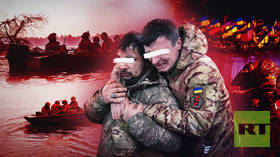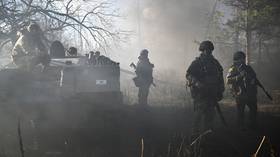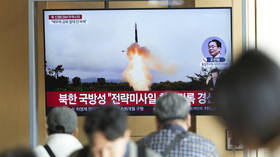‘Rusak’, ‘Zhuravl’ and ‘Chaika’: Russian developer discusses new attack and reconnaissance drones
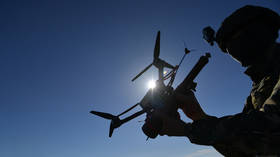
In 2024, the ‘Lastochka’ (‘Swallow’) attack drone, the updated ‘Rusak’ first-person view (FPV) drone, and the ‘Zhuravl’ (‘Crane’) UAV carrier, which transports kamikaze drones, will be sent to the Ukraine conflict combat zone for testing. Discussing the developments in an interview with RT, the founder of the Stratim design bureau, which produced the weapons, said the new UAVs will effectively strike the enemy’s infantry and equipment. The Stratim team is also developing anti-interference navigation and improving its ‘Pozemka’ communication module, he added.
— When did Stratim start to develop reconnaissance and attack drones and supply them to the front? What makes your company’s products special?
— The idea to launch a company that would manufacture FPV drones came to me in the summer of 2022, when volunteers started talking about the shortage of drones. [The late military blogger] Vladlen Tatarsky had a particular influence on me. We personally discussed the type of equipment that our soldiers lacked.
The final decision to open the design bureau and the production site was made in the fall of 2022. I got a team of engineers together from among the people I knew, and they brought along other specialists, people they were acquainted with. The design bureau was named ‘Stratim’ after a Russian mythical bird with a woman’s face.
At first, Stratim operated in ‘garage mode’ at a defense industry research institute. Then, in November 2022, I traveled to the front line with RT military correspondent Andrey Filatov. I witnessed the tough storming of Pervomaisky [an urban settlement near Donetsk]. Together with Filatov, we helped the soldiers of the 9th Regiment of the People’s Militia of the Donetsk People’s Republic (DPR) by conducting reconnaissance using drones.
In order to understand the specifics of modern combat operations and the use of UAVs, I studied topography and artillery reconnaissance, as well as assault operation tactics.
That’s how I understood exactly what type of drones the army needed – what tactical and technical characteristics they should have, what kind of onboard equipment, communications equipment, machine vision equipment, and the software they have to be equipped with.
Our first drones were quite primitive, but with each new model they became more complex, more technologically advanced and efficient.
Now, the UAVs developed by Stratim are well adapted to the strategy of combat operations, which implies a very short period of time between military reconnaissance and attack. Our drones are divided by their functional purpose (i.e. reconnaissance and attack drones), weight (light, medium, and heavy-weight drones), and according to the aerodynamic construction (multi-rotor drones and fixed-wing UAVs).
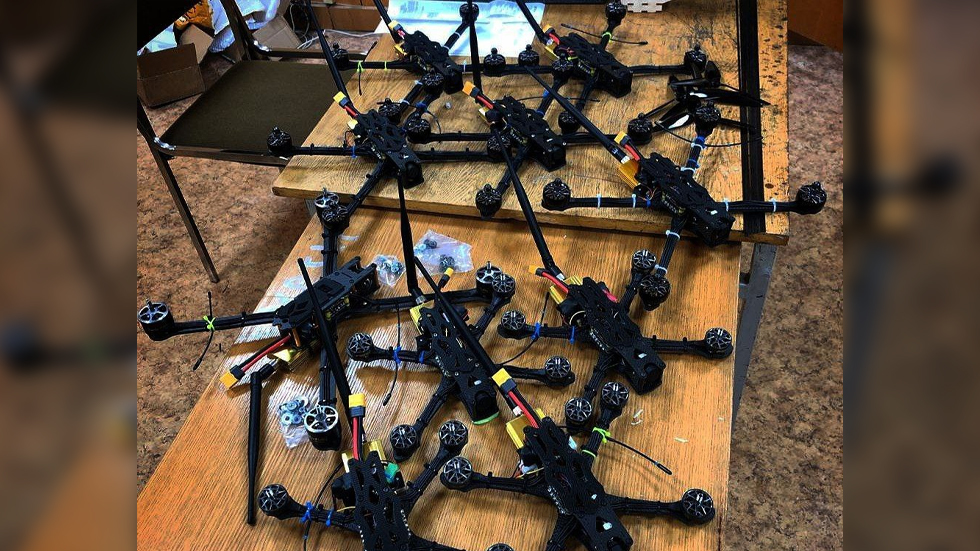
We also always supply relay drones. They ensure the transmission of control signals and the operation of a video channel that’s necessary for reconnaissance drones equipped with a camera and FPV drones. Drones of this type often hover at an altitude of about 150 meters and work in offline mode.
Naturally, we’re always concerned about the safety of drone pilots. The drone controls produced by Stratim can be located 50-100 meters from the position of the crew. The drone pilot and co-pilot remain hidden in a shelter. If the enemy’s radio intelligence detects the control signals, the strike will hit the communication equipment or the wire that stretches from the shelter [but not the pilots themselves].
Today, Stratim has its own production site, and a separate R&D department that develops components and additional modules for drones, such as flight controllers as well as communication and computer vision equipment.
At the current stage, it’s important for all our products to be tested at the front.
— Why don’t you disclose your name, but use the military call sign Obi Wan?
— Our work greatly annoys the Armed Forces of Ukraine (AFU). Presently, the enemy is losing [the battle] and we know that their special services are trying to track down Russian engineers, including those who produce UAVs. For security reasons, the Stratim team doesn’t disclose any personal data. However, any of us who want to cooperate with the media or is active on social media can use military call signs for identification.
I’d like to say a few words about the company’s engineering masterminds. For example, Stratim’s chief designer used to work on CERN’s Large Hadron Collider project, and the director of the multirotor department worked on robotics at the Skolkovo Institute of Science and Technology.
— You mentioned that your drones are used in the short period of time between military reconnaissance and attacking a target. Could you explain how your UAVs are used in practice?
— When developing the drones, we took into account the specific characteristics of how they would be used and the distance to the target. For example, at short range (5-10km) or, in military terms, at ‘tactical depth’, one needs reconnaissance UAVs that can create an orthophotoplan – i.e. a digital map of the area made by means of digital photography. In the context of the current military conflict, the orthophotoplan includes not only a detailed map of the terrain and buildings, but also the location of enemy positions and firing points.

It’s very difficult to create an orthophotoplan near the front line because of electronic warfare (EW) equipment – mainly anti-drone weapons and other compact jammers, such as trench electronic warfare systems.
One of the simplest ways to protect drones is to fly them in radio silence mode, when the devices fly along a pre-established route [i.e. using the so-called internal navigation system]. In this mode, enemy jammers rarely detect UAV signatures, but even if this happens, the drone will not be disabled and will safely return home.
Our reconnaissance drones meet all of the above requirements. The autonomous drone ‘Voron’ (‘Raven’) is launched first in order to create an orthophotoplan. It can fly at an altitude of up to 500 meters, and it takes 30 minutes to execute the task. This UAV is quite maneuverable and can reach a speed of over 40km/h. It’s used for mapping terrain and buildings.
Then, the ‘Vorobey’ (‘Sparrow’) drone rises into the sky. It’s a lot like the Mavic quadrotor drone. It has all the advantages of the Chinese version, but doesn’t require reprogramming — the user can customize it for their tasks. The drone’s main tool is a camera with 6x zoom. Usually, this is enough to see the enemy’s positions.
Kamikaze drones then take off and strike targets located at tactical depth, such as the enemy’s firing points, the infantry located in shelters, and armored vehicles. These are ‘Shegol’ (‘Goldfinch’) light attack drones which are capable of carrying a combat load of up to 2kg, as well as ‘Rusak’ UAVs with a 3kg payload capacity, which carry RPG-7 shaped-charge ammunition. Also, these UAVs can be equipped with a TBG-7V thermobaric projectile, which is designed to destroy manpower in shelters. Most often, shaped-charge grenades are suspended on these UAVs.
To drop VOGs (high explosive fragmentation grenades), the Stratima team has developed the ‘Golub’ (‘Dove’) bomber drone with a revolver-type cylinder capable of firing 12 grenade launcher shots. This drone is effective during an offensive or for striking infantry in poorly equipped fortifications.
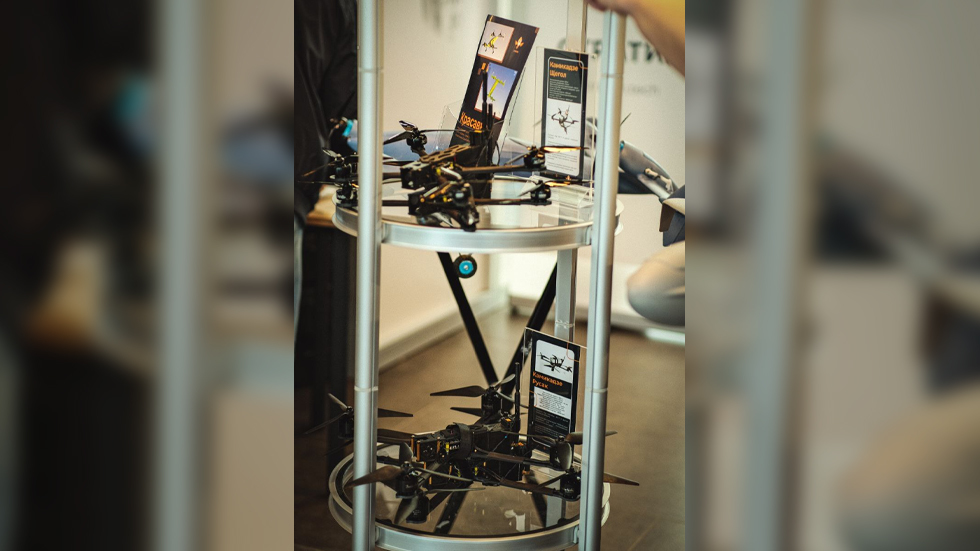
The ‘Rusak’ drone is currently undergoing modernization. In 2024, its updated version will be able to strike even moving targets thanks to the autopilot feature [that can be activated] in the final stages of the flight. To be more precise, this FPV drone will have homing devices which will be activated 500 meters before approaching the target. The improved Rusak drone will make the drone pilot’s work easier and safer.
At medium range, which can be defined as 10-40km, we suggest using our vertical takeoff and landing drones, constructed according to the ‘tailsitter’ design. Such drones take off from a small platform and then shift to horizontal flight.
What targets are located at medium range? Primarily MLRS and barrel artillery, so this range is important for counter-battery warfare. Also, armored vehicles, warehouses, and infantry troops that replace fighters who are in the trenches, are all located within 40km. Attacking the enemy’s manpower at medium range can disrupt the rotation of troops.
When developing medium-range UAVs, our team took several factors into account. First of all, building a normal runway would be nearly impossible [in frontline conditions]. Secondly, catapult launchers would be problematic since their elastic cables freeze at subzero temperatures.
For effective reconnaissance missions at medium range, we use the ‘Strepet’ (‘Little Bustard’) reconnaissance drone. Among its advantages are vertical takeoff and landing and a heavy payload capacity. This drone can conduct reconnaissance using both visible light and thermal imaging methods. The Strepet has a flight range of up to 100km, can carry a payload of up to 10kg, and has a speed of up to 100km/h.
To strike enemy equipment, the Stratima team is developing the ‘Chaika’ (‘Seagull’) loitering munition with a shaped-charge warhead, with a range of up to 30km. It’s capable of carrying explosives of the K3-6 type weighing about 4kg. If necessary, it can also be used as a medium-range reconnaissance drone. This is also a ‘tailsitter’-type model. It takes off vertically and then switches to horizontal flight.
Another interesting tailsitter-type drone is called ‘Redkaya Ptitsa’ (‘Rare Bird’) — it is more compact and has four X-shaped wings, which allow it to fly more than 20km using the lift coefficient. At the same time, in terms of cost and simplicity of design, this UAV is comparable to an FPV drone.
Another promising model with similar functionality is the ‘Zhurval’ (‘Crane’) drone. It will become one of the first Russian drone carriers which are often called ‘drone mother ships’. The UAV will carry three ‘Sinitsa’ (‘Parus’) kamikaze drones capable of hitting military equipment from any side.
The wingspan of this drone is about 2 meters, the maximum take-off weight is 25kg, the flight range is 30-50km, and maximum speed is 100km/h. We expect to test this drone in 2024.
We also think the army will need a kind of Switchblade-600 analog. We called it ‘Lastochka’ (‘Swallow’). This kamikaze drone will be placed in a transport and launch container – one similar to the RPO-A Shmel tube. It can be easily transported on the shoulder, and prior to launch it is mounted on two legs, like a mortar.
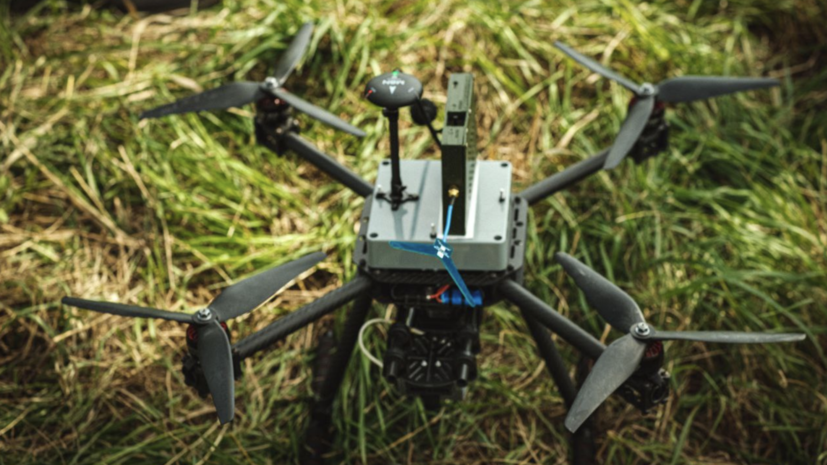
The drone will have wing opening mechanisms. Lastochka will be able to carry 1.5kg of explosives and hit targets at a distance of up to 35km. Presently, we are solving a number of technical issues. In 2024, the system will be sent to the front for testing. The main advantages of this drone are a simple launch mechanism and modern guidance tools.
— Several Russian private manufacturers are developing jet-powered UAVs. Have you ever considered this as well?
— Yes, we are currently working on several such UAV models. We’re developing an EW-resistant medium-long range drone called ‘Tyuvik’ (‘Levant sparrowhawk’) which will take off from 2-meter-long reusable folding rails. A solid fuel rocket engine (also called a ‘black powder rocket motor’) will propel the UAV.
One modification of the Tyuvik drone will be powered by petrol, the other – which will have a range of 40km – will use electric motors. To strike a target, only the coordinates will be required. The object will be detected with the means of machine vision.
Other jet-powered UAVs that are being developed are long-range drones. They will be equipped with small-sized gas turbine engines. The ‘Yastreb’ (‘Hawk’) UAV will also use solid-fuel propellants. Stratim presents this model as a smaller analogue of the ‘Geranium’ drone.
The UAV will be constructed using affordable components and, like the Geranium drone, should be cheap. We are currently testing an engine turbine, and it’s already starting to give the right traction. The tests should be completed this winter. The flight range of the ‘Yastreb’ drone is 300-350km and its payload capacity is 16kg.
— What other projects is Stratim working on?
— In addition to developing new UAVs and improving current models, Stratim is focused on developing target recognition and homing devices.
We’re working on the implementation of anti-interference navigation – this technology doesn’t use signals from global satellite systems, since these are vulnerable to electronic warfare systems. Specifically, these flight technologies employ visual odometry – i.e. when images of the underlying surface are analyzed and used for navigation. This method is more effective than conventional inertial navigation systems. Odometry allows the UAV’s computer to map out a route [to a specific target] and back.

Currently, we’re also writing a protocol for the ‘Pozemka’ communication module that we had developed earlier. The module operates at non-standard frequencies and uses frequency-hopping spread spectrum technology.
We have also created our own analog video transmission system and antennas for it. It operates in a frequency range that the AFU’s electronic intelligence systems currently do not recognize, and it can’t be jammed by the enemy’s EW equipment. We believe that our ideas in the field of communications and autonomous flights will boost the effectiveness of UAVs, save the lives of our soldiers, and bring victory closer.


